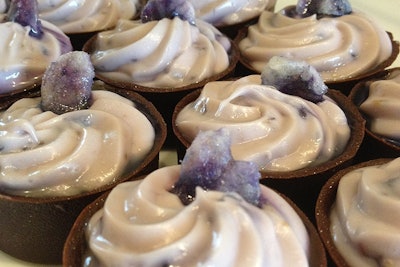
Planners are accustomed to considering the senses when designing meetings and events, selecting lighting to create the right visual appeal, audio and music that is in sync with the content, and foods that guests will enjoy. But what about the sense of smell? It’s often overlooked, and yet scent can affect an attendee’s mood, memory, and overall impression of an event.
“Scent is the only one of our five senses that goes directly into the limbic system of our brain. That’s where our emotions are housed and that’s where our associative learning and memory is housed,” says Jennifer Dublino, C.O.O. of the Scent Marketing Institute, an international association that conducts research and education projects in the field of scent and sensory marketing. "And because it is connected to the limbic system, you can have the scent on a very low level where people don’t consciously notice it, but it will still work."
Dublino suggests selecting scents based on the desired outcome: rosemary for mental acuity; peppermint to help people stay alert; lavender for relaxation; vanilla to reduce anxiety; and citrus scents to create an overall positive feeling.
Scent also evokes memories, so it can be used after an event to renew connections with your attendees. “If you have an educational conference, you can have a scent in the room and then later have another event or a postcard or something else that they are exposed to with that same scent, and that will bring that information to the forefront of their memory,” Dublino says. Another idea: send your guests home with a candle or satchel of the scent used in the meeting.
ScentAir manufactures commercial scent delivery systems and more than 2,000 fragrances used by hotels such as Westin, Hilton, and Marriott, as well as retail stores, hospitals, casinos, and amusement parks. ScentAir emerging markets sales executive Lora Brooks says in the past year more business events have started using scents. “There is not a day that I don’t send out scent samples for clients because they want to incorporate scent in some manner, whether it’s a business meeting or an event, a convention center, or a trade show,” Brooks says. "In the past few years we have gotten into working with exhibitors. The idea behind it is that by defining a scent you create an identity for your brand."
Subtlety is key when implementing a scent; strong aromas can cause a negative reaction. Planners should consider ceiling height and whether they want to blanket the area with a scent or use a zone application, which can be more effective. “We will habituate to a continual stimulus. So when there is a change, the brain notices it,” says Andrea Sullivan, president of BrainStrength Systems.
Planners should choose scent dispersal systems based on the square footage of the space. Options range from small systems suitable for a trade show kiosk to large systems that can cover 4,000 square feet.



















